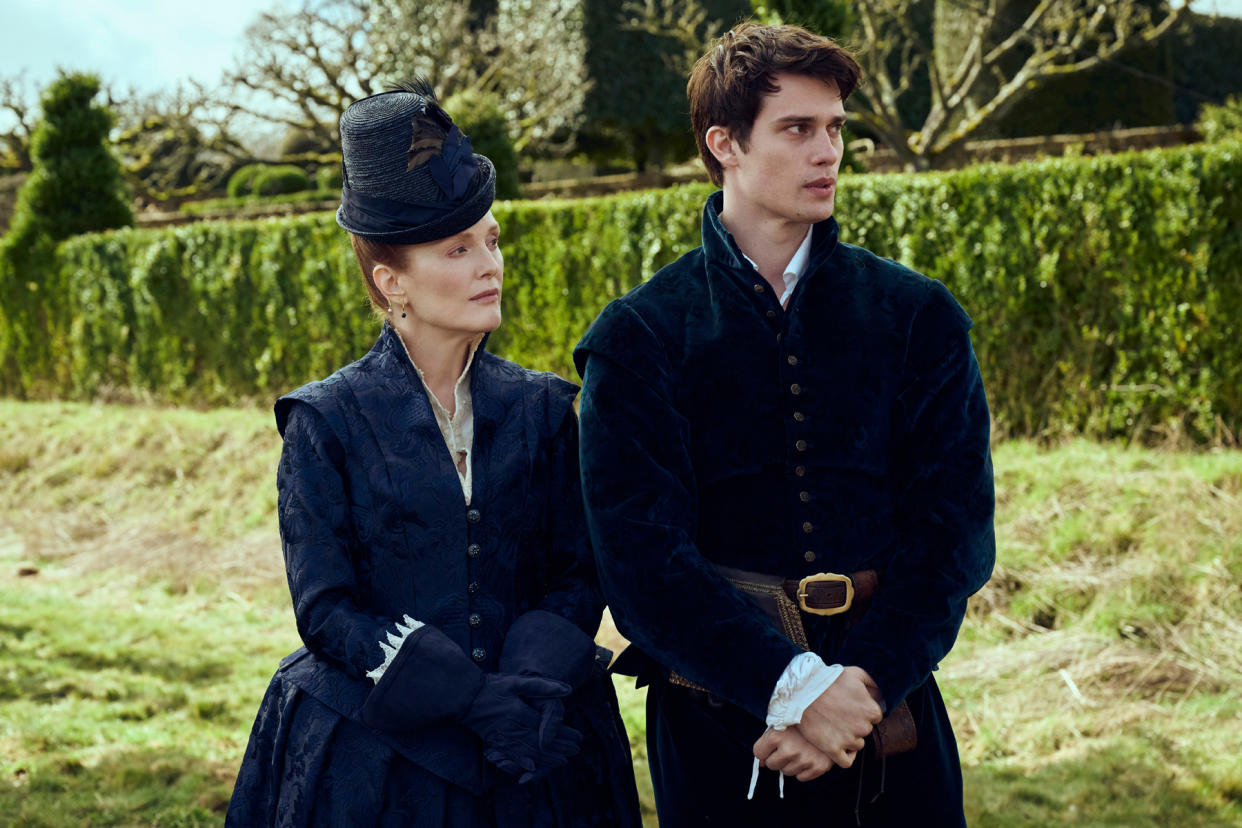The Wild Real History Behind ‘Mary & George’

- Oops!Something went wrong.Please try again later.
- Oops!Something went wrong.Please try again later.
- Oops!Something went wrong.Please try again later.
Quick, think of an English king famous for having insatiable appetites, beef with the pope, and a romantic life so messy that hooking up with him was a shortcut to either limitless political power or the Tower of London. If you’re thinking of Henry VIII, he of six wives and the whole “divorced, beheaded, died” thing, come on. The Tudors don’t have a monopoly on bizarre, sexy royal drama. Frankly, they’ve had enough time in the spotlight.
Starz’s “Mary & George” finally shifts that spotlight to the Jacobean era — named for King James I of England and VI of Scotland, who became king when the Tudor line ended and who transformed the English court into what happens when the VIP section of a Scottish gay bar takes over the government. And that’s just the beginning of the story. Here’s what you need to know about the world of “Mary and George” before watching the show.
More from IndieWire
How did James I become King of England and Scotland?
In the final years of her life, the childless Tudor queen Elizabeth I named her cousin James as her heir. On one hand the choice made perfect sense. James was already King James VI of Scotland, so becoming King James I of England was a cautious first step towards creating some sort of…united kingdom. He was as religiously qualified (read: Protestant) as a monarch could get, and he was Tudor-ish on his mother’s side by blood if not by name.
On the other hand, England and Scotland were nowhere near ready to unite, James’ wife was a not very secret Catholic, and James’ Tudor-ish mother was Mary Queen of Scots, who Elizabeth had imprisoned and executed in 1587. But hey, free throne!
After Elizabeth I’s death, James came down from Edinburgh with an entourage of Scottish nobles who demolished and rebuilt the English social order to better suit the new king’s lifestyle. That meant lots of parties, lots of hunting, and lots of hot dudes swarming around the king like a group noun of Instagram models spotting an NBA player in the wild. Just how James liked it.
Was King James I gay?
The short answer is yes, with the caveat that generally, putting the language of modern queer identity — “gay,” “bi,” “pan,” “queer,” and so on — into the mouths of 17th century figures is bad scholarship. But James was phenomenally gay. As in, one of his favorite pastimes was watching men dance for him in tight little costumes made from “curious fabrics” gay. Wrote love poems about cute guys and recited them at dinner gay. Once almost cried in front of his privy council because he got choked up talking about how much he loves his boyfriend gay. Was so obviously flamboyant that the year he arrived in England a satirical magazine published a joke that read “Elizabeth was King, now James is Queen” gay.
Who are “Mary and George” and what is their role in all of this?
Mary Villiers was a brilliant and ruthless woman who realized that James I’s presence on the throne of England provided a golden opportunity. It hadn’t been that long ago when the key to social ascension was tossing a daughter onto the bonfire that was Henry VIII and James burned no less brightly, just for men. This was the season for moms with hot sons, which put Mary in mind of her son George.
It is an historic fact that George was astonishingly beautiful. Even people who hated him admitted he was stunning and magnetic, with contemporaries writing that they found themselves staring at him in complete captivation for minutes at a time. Good thing too, because he didn’t have a ton else going for him. He hadn’t done well with formal education and displayed few other talents, save dancing. Had James I remained in Scotland, Mary might have written George off as nothing, but in the Jacobean market the value of a buff twenty-one year old baddie who could dance was worth everything.
Mary had the brains, George had the looks, and James didn’t stand a chance.
Who else is important to the story?
Every story needs a villain, and from the perspective of Mary and George in “Mary and George,” that villain is Robert Carr, Earl of Somerset and James’ lover. Carr was a Scottish courtier who used his status as the favorite to block English influence on the king, which predictably pissed off a lot of English nobles. For the English party at court, it would be much more convenient if James turned his attention to a lovely young Englishman instead. If only they could find one. Hmm. There had to be one around here somewhere…
Sources used for this article include “The King’s Assassin” by Benjamin Woolley, upon which “Mary and George” is based.
“Mary and George” is streaming on Starz now, with new episodes on Fridays.
Best of IndieWire
The 12 Best Thrillers Streaming on Netflix in April, from 'Fair Play' to 'Emily the Criminal'
Quentin Tarantino's Favorite Movies: 61 Films the Director Wants You to See
Sign up for Indiewire's Newsletter. For the latest news, follow us on Facebook, Twitter, and Instagram.

